Social Awareness
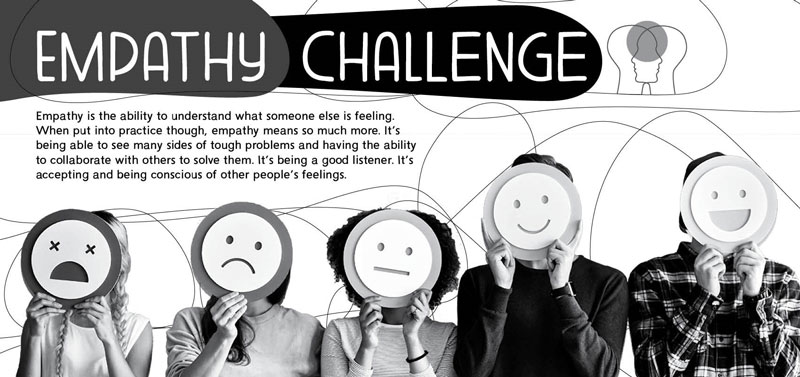
Find this activity in the student portfolio
Objective: Students will be able to demonstrate empathy, compassion, and concern for others' feelings.
Estimated Duration: 20-25 minutes
Description: Empathy is the ability to understand and share the feelings of another person. Empathy can transform individual lives for the better while helping to bring about positive social change in schools and communities. When we put ourselves in another person’s shoes, we are more sensitive to what that person is experiencing. By teaching students to be more conscious of other people’s feelings, you can create a more accepting and respectful school community. Having empathy can also help students build a sense of security and stronger relationships with other children and teachers.
This activity will help students show empathy over an extended period. They are asked to take a challenge to show empathy to someone 5 days in a row and document how they showed it.
Teachable Moments: There are many ways you can help students build empathy, compassion, and concern for other’s feelings:
- Model kindness and empathy to your students.
- Let your students know they are not alone and listen closely to them.
- Explain that people have different points of view. It is important to understand that sometimes people can disagree with us simply because they have a different point of view.
- Encourage empathy in your students and don’t force apologies.
- Help your students name their feelings, as understanding their own feelings is an important step in understanding the feelings of others.
- Encourage students to listen actively to others. Explain that it is important to listen to one another in a conversation.
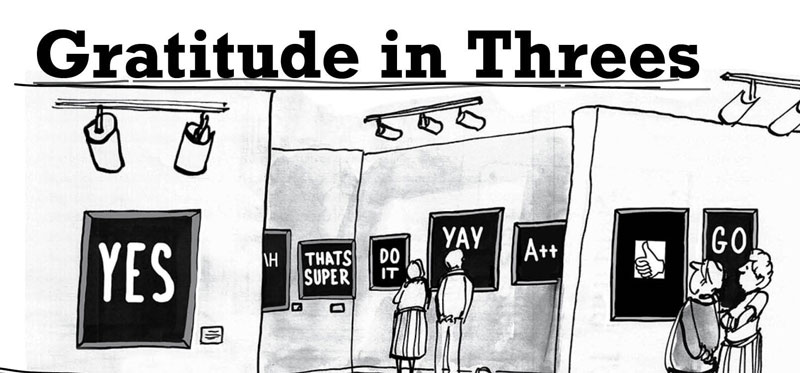
Find this activity in the student portfolio
Objective: Students will understand and express gratitude.
Estimated Duration: 20-25 minutes
Description: Gratitude is an important skill for students to understand and practice. Gratitude is recognizing the good things in life and the source of this goodness.
When most people think of gratitude, they tend to think about behaviors, like saying thank you. But gratitude is more like being able to notice good deeds, the things around you, and to feel thankful. Focusing on the positive things in your life can help you build a stronger sense of self.
Students who are grateful tend to be happier, more optimistic, and have better social supports. They also tend to give more social support to others as well.
This activity will help students identify and express the things that they are grateful for in their lives. Students will identify 3 things they are thankful for in a number of different categories.
Teachable Moments: There are many ways you can help students to understand and express gratitude:
- Lead by example, illustrate gratitude through your own actions. Thank students and coworkers and initiate conversations of gratitude. Share what you are grateful for.
- Choose a time to express gratefulness together as a class. You might have the class write letters of thanks to another class or visitor have had.
- Encourage students to expand their ideas of gratitude. They will usually start with the obvious, like “I am grateful for food.” But, encourage them to dig deeper and turn that thought into “I am grateful to those who work in the fields to grow and harvest the food I eat.”
- Share stories of people who have been transformed by gratitude.
- Allow time for random acts of kindness throughout the classroom and school.
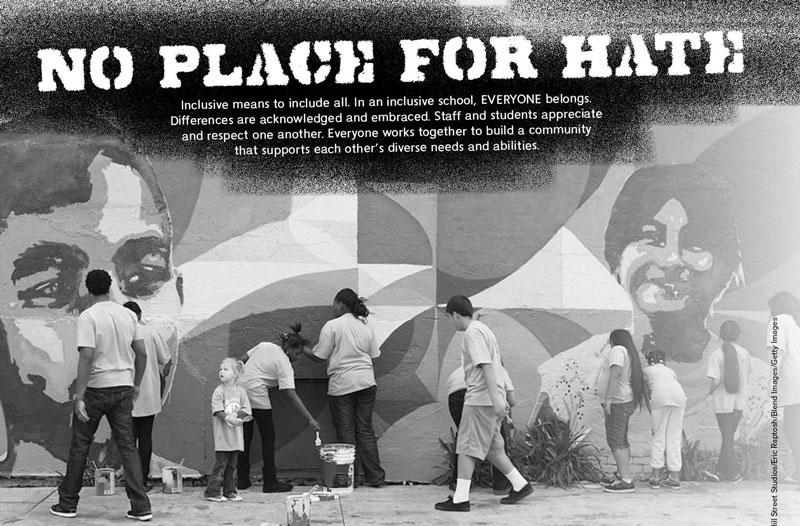
Find this activity in the student portfolio
Objective: Students will be able to understand the importance of including others from diverse backgrounds, cultures, and contexts.
Estimated Duration: 20 minutes
Description: Being inclusive means to include all. In an inclusive school, EVERYONE belongs. Differences are acknowledged and embraced. Students must understand that differences are what makes us who we are and the world wonderful. Teaching children to value differences helps them to practice empathy and oppose unjust views.
This activity will allow students to express their views of what an inclusive school looks like. They will design a mural that represents their ideas of inclusion.
Teachable Moments: There are many ways you can help students to celebrate and accept differences:
- Celebrate similarities and differences with artwork and charts. Display the charts and artwork on bulletin boards and around the classroom. Emphasize how proud you are to have so many unique students in your class.
- Challenge the idea of “normal.” It’s helpful to challenge the idea of “normal” to see past differences. Remind students that all of us are born unique with different likes, abilities, looks, personalities, preferences, etc., so there is no one way to be “normal.”
- Review the materials you use to teach. Do they include diverse individuals? Do they challenge harmful stereotypes?
- Consider students' cultures and language skills when developing learning objectives and instructional activities.
- Create a classroom that encourages discussion, openness, and acceptance. Encourage students to talk about their backgrounds and culture and show enthusiasm and interest in their contributions.
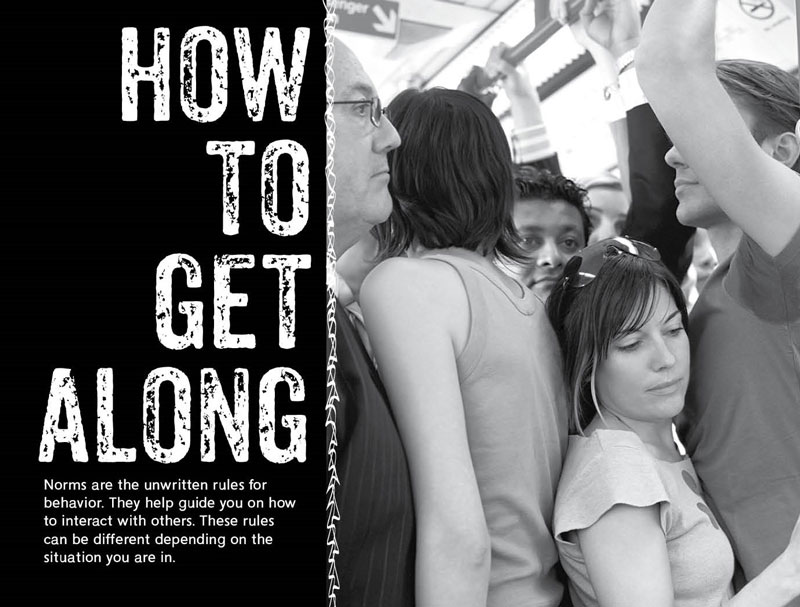
Find this activity in the student portfolio
Objective: Students will be able to understand social norms for school, home, and their community.
Estimated Duration: 20 minutes
Description: Social norms are the unwritten rules or behaviors that are considered acceptable in a particular social group or culture.
For example, holding a door open for the person behind you or putting your trash in the garbage instead of throwing it on the ground. Social norms give us an expectation for how to behave in certain situations.
It is important to help students understand that rules for behaving in their community, at home, and in school will help them to stay safe and be healthy. It also shows others they know how to be respectful to people and property. When people respect one another, it shows they care.
This activity will allow students to collect social norms they think are most important. They will write and illustrate a social norms rule book.
Teachable Moments: There are many ways you can help students to learn how to behave in different situations:
- Have students help create classroom rules and consequences. Post them as a visual reminder.
- Be sure that you are following the rules too! If a rule only applies to students, state that clearly.
- Be flexible. Following the rules should be consistent, but there will be times in your classroom that you will need to make exceptions. Acknowledging that and discussing it with students allows them to see the importance of flexibility when it comes to rules.
Foldable®: Shared Moments
Estimated Duration: 25-30 minutes

- Help students find current events related to social justice that they would like to investigate. Students write the title of the current event in their book.
- Cut along the outside solid black line of the two Two-Tab Foldables. Do NOT cut the middle lines at this time.
- Fold along the dotted lines on each rectangle to form anchor tabs.
- Glue the folded tabs on top of the gray spaces in the student book labeled: Glue anchor tab here. Notice that one anchor tab is to the left and one is to the right.
- When the glue is set, cut along the solid black line in the middle of each rectangular to form four tabs with the questions: What, When, Where, and How.
- Students answer the question with a simple phrase on the front of each tab and then write one or more related details under the tabs.
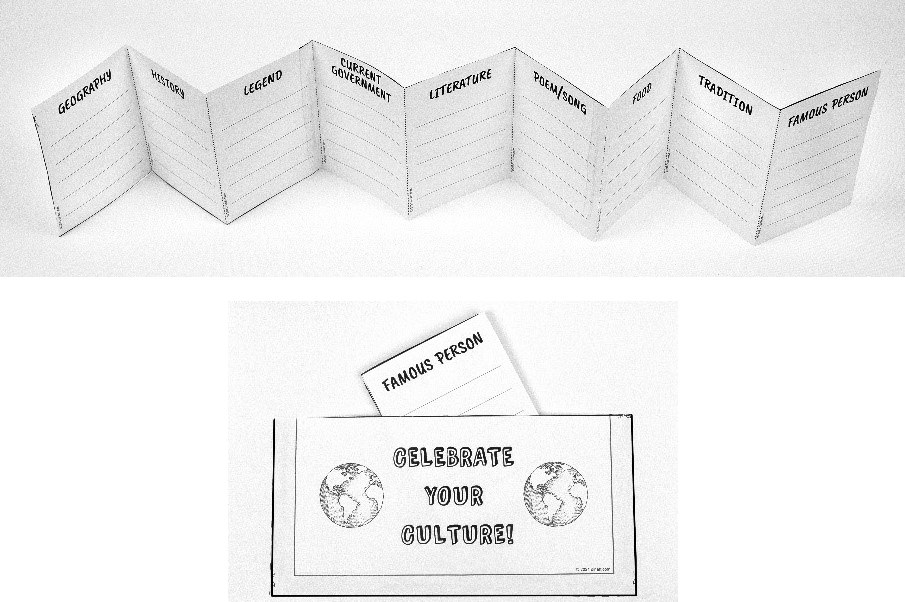
- Discuss the meaning of culture and use this activity to help students celebrate their own culture.
- Cut along the outside solid black lines of the Celebrate Your Culture Pocket. Glue three of the outer edges into the student book to form a pocket.
- Cut along the outside solid black lines of the three strips with three titles on each.
- Glue the ends of the UNFOLDED strips together to form a very long strip.
- Allow the glue to dry for a minute or two before folding along every fold line so the dots show on top of the fold. This is the easiest way to fold along dots.
- Now, refold the long strip to form an accordion booklet. Store the booklet in the pocket.
- Students research their culture and record information on the tabs. They can use reference materials from the internet, library, and they can interview relatives, and use other primary sources.
- This activity can be visited and revisited over time; it will not be finished in one class.
Go to other SEL competencies in this book (Intermediate 2 - Grades 5–6):

The teaching suggestions only work in accompaniment with the student portfolio, which has all the activity pages.
The teaching suggestions here are also available within a PDF of the entire teacher's manual.
